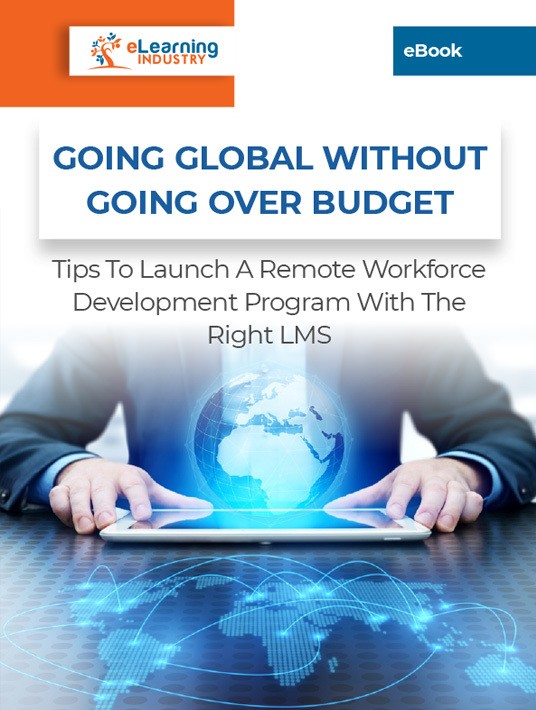How To Use An LMS To Improve Workforce Online Training
The basic tenet of running a business is to provide a product/service people are willing to pay for. It’s not about whether they need, or even want, what you’re selling. It’s about whether you can convince them to exchange it for money. Making those products or offering those services requires skills, and these skills should be continuously updated. It keeps your organization relevant. When you do notice certain abilities and capacities are missing from your company, you need it to fix it. Fast? How can you quickly deploy workforce training via LMS to address areas for improvement?

1. Online Training Simulations
When did you learn to swim? Some were taught through 'tough love.' They were unceremoniously tossed into the water and expected to figure it out. This might work because your body is naturally buoyant. On the other hand, you may be so traumatized that, going forward, water gives you panic attacks. Even if it’s in a glass. While learning-by-doing can be effective, the employee training participant needs an element of safety. For example, a task simulation with VR capabilities could allow them to learn the technique. They’ll be able to put their knowledge into practice and identify skill gaps more subtly. They’ll develop muscle memory and create mental pathways. Then when they actually venture onto the job, they already know what to do. Emphasize real-world tasks in your simulations and incorporate challenges they’ll find in the workplace.
2. Branching Scenarios
At many meetings, you’ll hear well-meaning clichés like 'There are no stupid questions.' Or 'There are no wrong answers.' The idea behind these statements is sound, even if their accuracy is wobbly. They’re intended to open discourse, inviting you to share your thoughts and learn from them. In online training, the equivalent is branching scenarios. It’s a type of multiple-choice exercise based on storytelling. You’ll get a situation with several possible outcomes. Choose one. None of your choices are wrong, necessarily, but each has distinct consequences. For example, say your branching scenario involves a safety drill. You see smoke coming from the server room. What are your options? (a) Break the fire alarm glass. (b) Ask your desk-mate if they see the smoke too. (c) Send an instant message to the IT guy. (d) Run towards the fire extinguisher. Each action, or response, causes its own chain of events. And they’re lessons you’re unlikely to forget.
3. Mobile-Friendly JIT Resources
The examples I’ve mentioned so far are all about safe spaces. They allow you to learn from your mistakes because they mitigate the damage. But because they’re immersive and sometimes haptic, the training will still 'feel real' at the psychological level. And sometimes the physical level too. But JIT resources take it a step further. These are quick, on-the-go tools you can access in your moment of need. It might be a product-knowledge infographic or a 30-second how-to video. The latter is highly micro and deeply specific. Thus, it might be something like ‘Compliant gifts for unhappy clients.’ Which could come in handy when you’re on your way to a sales meeting. Make sure these JIT online training resources are easily accessible via smartphone. It’s their most common on-the-go training hub.
4. Incorporate Self-Assessments
Employees may not even know that a skill gap exists in the first place. But a self, eLearning assessment can help them identify areas for improvement on their own. Then they can use the LMS for workforce training to bridge them remotely and rapidly. For example, a quick pop quiz reveals that they need to work on their negotiation skills. While a bite-size serious game identifies an undisclosed communication skills gap.
5. Host Live Events To Facilitate Peer Support
Sometimes the best teachers are co-workers who know more about the topic or have more experience. Host live events and invite a veteran employee to share their insights and help their peers bridge gaps. For example, your top salesperson can share pointers on the fine art of persuasion. Or explore how to read body language to find out if a prospect is ready to seal the deal.
6. LMS Recruiting
Remember, a workforce development LMS is more than a corporate online training tool. It can also be used to manage payroll, tabulate staff hours, and train customers. This means—should you choose to—you can offer limited LMS access to external users. So why not make it a sort of mini-employment hub. For certain skills, hiring an expert is faster and more efficient than teaching the skill to someone underexposed. Think about it from an economic standpoint. It saves time, and it might save money too. As such, the LMS can help you close company-wide skill gaps by finding the ideal person for your team. For example, an external partner who you can hire as a full-time IT tech for your firm.
LMS is an effective tool for workforce online training. And like many virtual tools, it can condense the duration of certain activities—including online training. So how can you employ it to fill your organizational skill gaps quickly? Use task-based simulations. Build branching scenarios with real-world cause-and-effect. Offer an easily accessible JIT library with top-shelf mobile optimization. And if all else fails, use your LMS to identify and hire staff with your target skills to bridge organizational gaps.
Do you want to discover more about the benefits a new LMS can bring to your business? Download the eBook Going Global Without Going Over Budget: Tips To Launch A Remote Workforce Development Program With The Right LMS, explore ways to bridge the gaps and enhance your business strategy.









